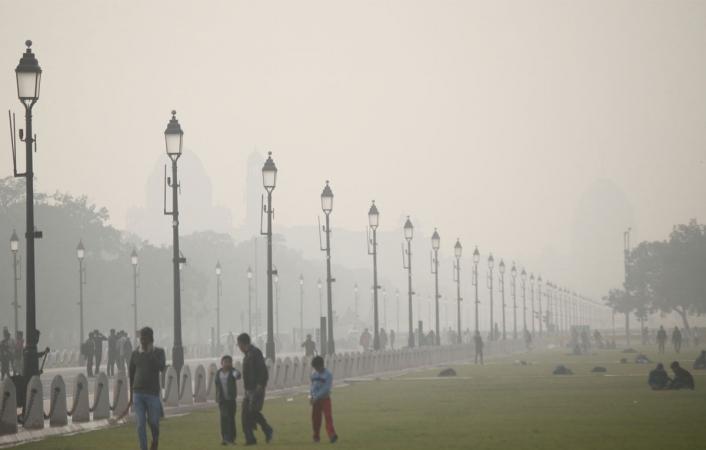The air quality in the national capital continued to persist in the 'very poor' category on Saturday, highlighting ongoing concerns. The India Meteorological Department (IMD) reported a drop in the minimum temperature, plunging to 12.3 degrees Celsius, three notches below the seasonal average.
Weather forecasts indicate the maximum temperature to hover around 25 degrees, coupled with expectations of shallow fog throughout the day.
At 10 a.m. this morning, Anand Vihar recorded air quality in the 'very poor' category, with PM 2.5 at 347 and PM 10 at 241, classified as 'poor'. CO levels reached 55, while NO2 stood at 81, categorized as 'satisfactory', according to the Central Pollution Control Board (CPCB).
Similarly, at the Bawana station, PM 2.5 levels were recorded at 328, signaling 'very poor' air quality, while PM 10 stood at 177, categorized as 'moderate'. CO levels were at 76, maintaining 'satisfactory' levels.
Dwarka Sector 8's AQI monitoring station registered PM 2.5 at 339, classified as 'very poor', and PM 10 at 183, categorized as 'moderate'. CO levels were at 75, meeting 'satisfactory' standards.
The Indira Gandhi International (IGI) Airport station reported 'very poor' air quality, with PM 2.5 at 318 and PM 10 at 159, falling into the 'moderate' category. CO levels were recorded at 101, maintaining a 'moderate' level.
Okhla Phase-II recorded PM 2.5 levels at 396 and PM 10 at 329, both classified as 'very poor', while CO levels stood at 68, categorized as 'moderate'. These readings emphasize the persistent challenges with air quality in various parts of the city.
(With Agency Inputs)
ALSO READ | Delhi's Air Quality Persists in 'Very Poor' Category, Concerns Continue


















